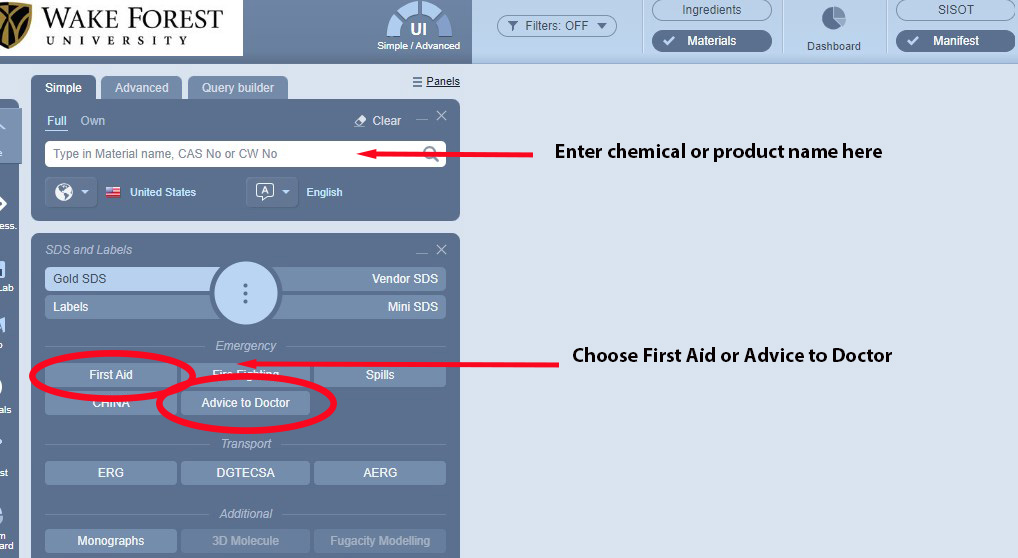First Aid and Medical
Medical Emergencies
Any medical emergency which involves loss of consciousness, profuse bleeding, possible broken bones, head or neck injuries, serious burns, cardiovascular distress, or any other serious injury or illness should immediately be referred to the University EMS system by dialing 911.
Students with non-life threatening injuries should seek medical assistance at Deacon Health.
Faculty or Staff with non-life threatening injuries should contact their supervisor and seek medical assistance at one the WFU preferred employee health medical providers.
First Aid / CPR / AED Training
First Aid Kits
First aid kits are intended to allow persons to treat themselves and/or their co-workers for minor medical incidents and are not intended to replace professional Emergency Medical Services (EMS).
More information as to the contents and use of First Aid Kits may be found here.
Any injury at work should be reported to a supervisor immediately. Supervisors must complete the First Report of Incident form as soon as possible. Information on the workers’ compensation process and contact information for approved clinics can be found on HR’s website.
Injuries
In the event of an incident, complete any immediate first aid/medical care measures and report the incident to your supervisor.
Faculty and Staff: Supervisors must complete the First Report of Incident form as soon as possible.
Student Injuries: complete the First Report of Student Injury form.
Automated External Defibrillators
An AED is to be used in conjunction with Cardiopulmonary Resuscitation (CPR) in cases of sudden cardiac arrest on campus, in accordance with the accepted protocols.
Guide to AED Locations
Biological, Chemical, Laser, and Radiological Exposure
- Wash needlesticks and cuts with soap and warm water
- Flush splashes to the nose, mouth, or skin with water
- Irrigate eyes with clean water, saline, or sterile irrigants
- Immediately seek medical treatment
- Contact your supervisor and the EHS office at 336.758.3427. Complete the Needle Stick/Bodily Fluid Exposure form with your supervisor and return the completed form to EHS.
Eye exposure – rinse eyes at Eyewash Station for 15 minutes. Call 911 or seek medical attention.
Body exposure – Remove contaminated clothing and use Safety Shower and rinse body for 15 minutes. Call 911.
For all chemical exposures, use the Chemwatch First Aid database for appropriate actions and advice to treating physician.

The major risk to laser users is damage to the eye from exposure to a laser beam. The level of damage depends on the wavelength and power of the beam, as well as factors of beam divergence and diameter and the exposure duration.
Seek immediate medical attention if your eyes are exposed to the beam, or if thermal skin damage occurs due to beam exposure.
Treat external or skin contamination by washing with mild soap and copious amounts of lukewarm water (cold water will shrink pores and seal material, hot water will open pores to contaminate more skin). Be mindful of the chemical composition of the contaminant as well; this could pose more of a health issue than the radiation.
- Avoid organic solvents or abrasive soaps that make the skin more permeable to the radioactive material.
- Wash for 2-3 minutes.
- For contaminated hands, give special attention to areas between the fingers and around the fingernails.
- Repeat no more than 3 or 4 times if contamination persists.
- If this procedure fails, repeat washing using a soft hand brush.
When contaminated glassware/sharp instruments lacerate the skin, immediately rinse the wounded area thoroughly under a stream of lukewarm water.
Immediately notify Radiation Safety following ingestion or swallowing of radioactive material.
